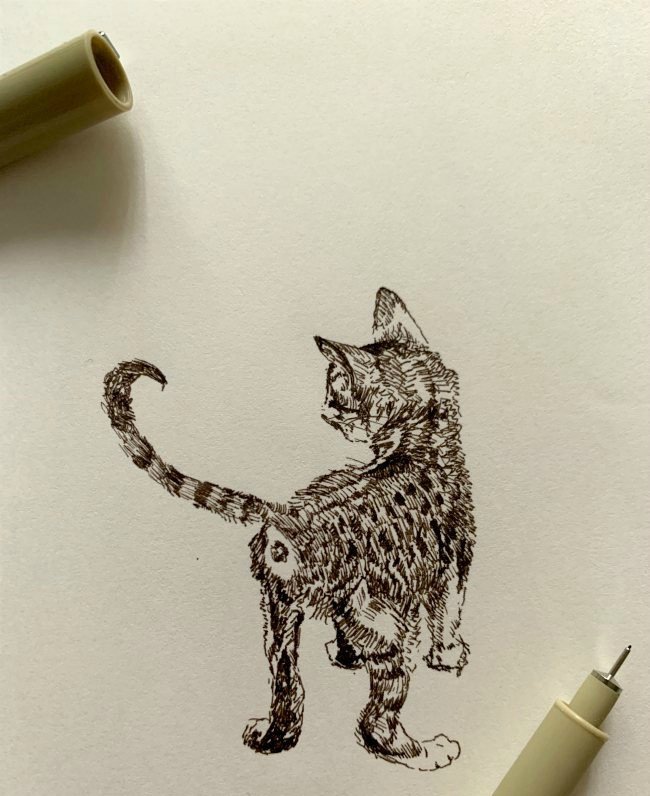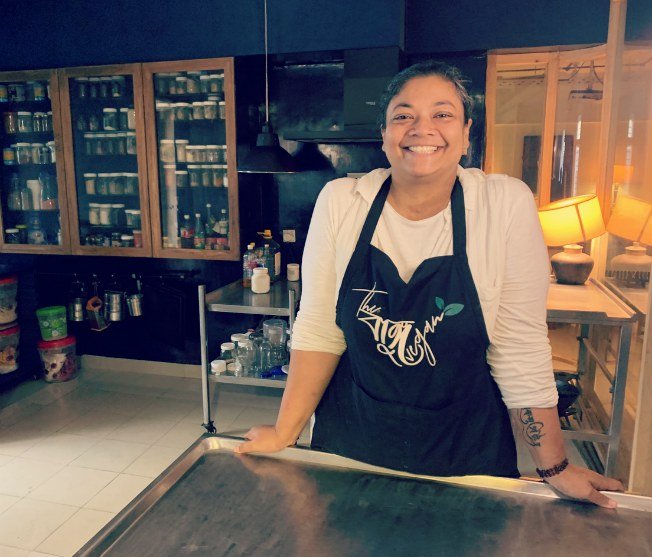All The Things We're Not Doing
‘What did you do as a child that made the hours pass like minutes?’
— Carl Jung
I
I recently cancelled my subscription to Netflix. It was meant to be a month–long experiment for July, but honestly, I didn’t miss it at all so I haven’t gone back to it yet. Nobody’s recommended anything to me in ages (perhaps we’re all a bit fatigued by screens?) but on the rare occasion they do, I do still get a reactive twitch – oh! I’d like to watch that. Then the desire quickly passes. And I feel the lightness of having removed the option altogether for now.
Not for the first time, I bought myself a small sketchbook, hoping to convince myself to create something instead of consume, which has sadly become my default setting. I bought sketchpads and even small paint sets in recent years but didn’t use them and eventually gave them away. It felt too monumental.
Then I injured my back and have been forced to be horizontal for a good portion of the day. So, on the 1st of August, I finally opened that sketchbook.
II
My mother taught me to paint using a basic children’s watercolour set with primary colours when I was five years old. In my early teens, I switched to pencil. I would draw my classmates, which was always popular. I replicated large posters by hand. Whatever I liked, I drew.
In my mid teens, I switched to oils and painted so diligently my parents thought I’d pursue it as a career. (Despite being quite traditional South Asian parents, they were not mortified by the prospect, and even encouraged me to do what I loved, which I now find extraordinary.)
I started out in college on this path but somewhere, amidst the depression and the angst, the existential crisis and the travel (I was jumping countries even then), I stopped drawing and switched to photography.
I studied and even taught photography so I can say in all honesty that I wasn't a great photographer. I was one of the stills photographers on the first film I worked on and I was delighted to see my photographs appear in French Vogue, Italian Elle and many more publications when the film released, but that was an assignment. I don’t know if I had anything to say through my camera lens, the way I felt I could with writing.
And when I say I stopped drawing, I mean I went from 100 to zero. So opening my sketchbook nearly three weeks ago, after a 28–year gap, could have felt momentous. But it somehow didn't. I think it's because I wanted to start drawing again purely as some free flowing release. Not to make Art. Not to sell it. Not to Say Something through it. But to greet my old love again and see if the romance was still there.
III
My first sketch was in pencil. Then I randomly tried drawing with a pen and loved it. I had never used a pen before this way. Drawing with ink means I have to (a) be fearless – I can't erase ink, after all, so the approach from the get–go has to be confident; and (b) accept what comes and make it work. These are also good approaches to life in general.
I’m using pens I had at hand (which incidentally turned out to be a favourite of many artists, which was nice to know) and a cheap sketchbook that unfortunately bleeds through. But still, I try to draw every day.
Clockwise from top left, Days 2, 3, 4 and 5
Because I’m a nerd, I went down a mini rabbit hole as I looked into more tools. I find this all deeply exhilarating. Because I’m going to move countries soon, I know I can’t weigh myself down with a large kit, though I’m sorely tempted. And it's a great deal more fun to utilise the time I would spend watching Netflix on instead studying pens, paint and ink, as well as of course actually drawing.
IV
I remember always hearing how people should have ‘hobbies’. It sounded so quaint. But now I have a real one! It’s not reading books or watching films (both consuming). I’m not athletic (though how I wish I were). But art! Ah.
As this is something that can be infinitely improved, I can keep challenging myself. I thrill at learning curves.
I did still lifes of my succulents in terracotta pots and of various tins (I love tins). Despite my seeing these objects multiple times a day in my home for more than a year, I actually properly saw them when I drew them.
Being a highly anxious person, drawing forces me to be present and focused on the page in front of me. This has helped enormously with recent stresses and strains.
There’s the famous ‘Flow’ where you’re so absorbed in an activity that time seems to cease; this is based on extensive research by psychologist Mihaly Csikszentmihalyi who believes it’s the secret to happiness (see his TED talk here). While I haven’t yet fully “disappeared” into drawing the way I do with writing, it is definitely my happy space. For me, this circles back to creating. I love books madly, and while I can be genuinely ecstatic over reading a novel, it can't compare to creating something myself. Even when the novel is a genius work of art, and all I’m doing is sketching a friend’s cat.
The stakes are low. If a drawing doesn't work, nothing terrible happens. I turn the page and try something else. Or I repeat and repeat. Which is also kind of fun. Even when I still can’t get it quite right. I like not having any pressure to be any sort of champion.
All The Things We Aren't Doing | Nupu Press | nupupress.com
I used to count a day’s success in terms of productivity, the end result being the sole accomplishment. It’s transformative to instead do something because the actual process of it is sheer delight. I’m not doing it to have done it. I’m doing it because I love doing it.
Drawing has prompted me to use my hands more creatively overall too, like converting a cloth bag into a paintbrush roll-up pouch. I haven’t used a needle in decades either but that's been fun as well.
I’d love to hear about your hobbies too – why you picked it up and why you keep doing it!
If you're interested! I wrote a piece last week for my friend Aradhana Seth's new project, The Material Memory of Cinema, dedicated to film production design. I wrote about a wooden tray I'd bought from the shoot of The Bourne Supremacy. You can read it here.
‘Because I think I’m making progress.’
— Pablo Casals, legendary cellist, when asked why he continued to practise at age 90.
Related Recommendations
For anyone interested in starting drawing, I highly recommend Samantha DionBaker’s excellent book, Draw Your Day. It’s simple and helpful, providing information on tools, tips and prompts. It took me back to when I used to keep a daily journal in a tiny notebook while studying in Italy, drawing and writing down fun things I learnt each day (though her journal is far more pretty and detailed!).
I also love the book, An Illustrated Journey, edited by Danny Gregory, where dozens of artists around the world share their artwork as well as their processes and watercolour kits for drawing while travelling (it's free on Kindle Unlimited). I went back to read it a second time once I became more familiar with different pens and paints, and loved it all over again.
I usually read endlessly on my favourite topic du jour, but these two books were all I needed to push me. There are countless books on drawing; I recommend finding one that ‘speaks’ to you – perhaps it’s their style, or what they’re teaching (watercolour, ink, pastels, oil, etc). And of course there are tons of free classes on YouTube as well, which I haven't looked into yet for fear of further rabbit holes.
The thought of being able to walk into a well-stocked art store and try out different pens, paper and paints makes me hyperventilate with excitement (we’re still in lockdown and art shops are closed). But of course, all you really need is paper and something to draw with, like a pencil or pen.
Awesome pens seem to be made in either Germany or Japan. I’m using a Pigma Micron pen (Japan) in sepia (I love brown ink). I had a set of these technical pens with different nib sizes and found, much to my surprise, that the 005 is perfect for drawing (its 0.2mm nib is too fine to write with). This is a fantastic pen – smooth, consistent, doesn’t scratch – with archival quality ink, so it’s waterproof (it won’t bleed when you layer watercolour over it), lightfast and permanent.
However, once the ink finishes or the nib gets damaged from a lot of use, I’ll have to discard the pen. This feels so wasteful. I’m looking at trying a rOtring Isograph 0.2mm (Germany), a refillable technical pen.
The most eco option is to use a fountain pen with permanent ink. Steel or gold nibs of fountain pens won't require replacing the way the plastic or chrome nibs of technical pens do. Also, a beloved fountain pen becomes a dear friend, and has personality that a throwaway or plastic pen just doesn't.









